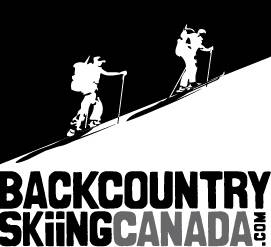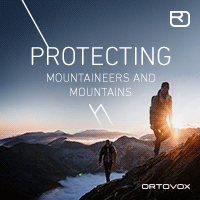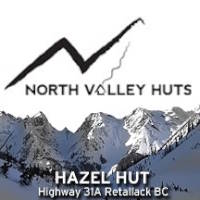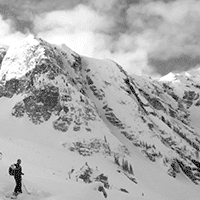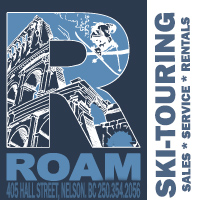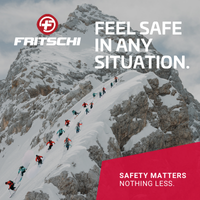Slack-country access debate heats up in Colorado...
Original story here: http://travel.usatoday.com/des.....45055632/1
'Sidecountry' ski deaths spur safety debate
Updated 03/18/2011 5:59 PM
DENVER, Colo. – Two men died last month after leaving ski-area access gates in search of untracked powder. As more skiers and snowboarders venture through access gates atop most every ski area, calls for difficult-to-reach rescues are climbing.

By Larry Pierce, AP
At Steamboat Ski Resort, wayward skiers who require ski-patrol assistance in an out-of-bounds area are billed for the patroller work. A difficult rescue can run up to $1,500.
By Larry Pierce, AP
At Steamboat Ski Resort, wayward skiers who require ski-patrol assistance in an out-of-bounds area are billed for the patroller work. A difficult rescue can run up to $1,500.
The deaths, rescue calls and swelling traffic just outside ski-area boundaries are stirring animated discussion among all players — ski-area operators, their Forest Service landlords and local sheriffs in charge of volunteer-led rescue teams — about how to handle the powder hounds who use lifts to access unmanaged "sidecountry" terrain on the other side of ski-area boundary ropes.
"It's kind of a dilemma," said Mike Ricketts, the Forest Service winter-sports administrator for Winter Park Resort, where snowboarder David Riddle died Feb. 11 after leaving the ski-area boundary through the 40 Gate at Mary Jane. "We're talking about public land and we want to allow access. We are always tossing ideas back and forth. .. looking for things we need to consider."
Lately, those ideas include expanding boundaries in such places as Steamboat and Winter Park, which could put popular sidecountry routes inside ski-area permits. Opening those drainages — such as Fish Creek at Steamboat, Zero Creek and the terrain below 40 Gate at Winter Park — would give the ski areas more control over dangerous snowpack, provide easier access out of steep-and-deep terrain and potentially thwart more accidents.
Other ideas include tweaking the wording on the signs that warn departing skiers that they are leaving the safety of ski-patrolled slopes. Some areas are shifting access gates to make skiers work a bit harder and to discourage so-called "yo-yo skiing" that enables side country users to easily leave and return to the ski area.
But each of these considerations adds a potential new problem. Expanding terrain — which can sometimes trigger intensive environmental review — can push thrill seekers to new out-of-bounds areas.
"Expand boundaries and users will continue to find new, more desirable places to ski," said Janet Faller, the Forest Service's winter-sports administrator for Steamboat.
When Aspen-area mountain rescuers and ski patrollers last season reached a lost woman who had skied out of the access gate atop Snowmass and into the cliff-pocked West Willow drainage, they asked her whether she had read the sign warning her she was leaving the ski area and entering menacing, unpatrolled terrain.
"She said, 'I started to, but it was too much information. But I have a picture of it,'" said Jim Stark, the Forest Service's winter-sports administrator for the five ski areas in the Aspen-Sopris district.
The woman's response prodded a shift in language on the signs. Instead of several paragraphs of legalese warnings, Stark erected a sign about 20 feet past the gate, with a skull and crossbones and language telling passersby they are on their own from that point forward.
Sadly, 26-year-old Snowmass skier Brandon John Zukoff was killed in February in an avalanche in the East Snowmass Creek drainage after leaving Snowmass ski area through an access gate.
At Steamboat, wayward skiers who require ski-patrol assistance in an out-of-bounds area are billed for the patroller work. A difficult rescue can run up to $1,500. In the past month, two injured skiers have been rescued from the area's nearby Fish Creek drainage using local search teams and Steamboat patrollers. One of the patrollers tweaked his knee hauling an injured man out of the densely timbered drainage.
"When the incident happens closer to the ski area, obviously we can get there faster than search and rescue," said Steamboat president Chris Diamond, who is updating his area's master plan and may propose a permit-expanding road into Fish Creek to allow better access and egress. "We've got a lot of issues here. Whose insurance covers our patrollers is one. We need to get all this back on the discussion table."
In Routt, Summit and Eagle counties, ski patrollers participating in a rescue instantly become part of the county's search-and-rescue team once they leave a resort's boundary. Vail's East Vail gate sees as many as 200 skiers leaving the ski area on a busy day, hiking toward a steep bowl that has claimed several lives in recent years. Even with the growing traffic, calls for rescue are rare: fewer than five a year at both Beaver Creek and Vail out of almost 80 regional calls, said Leslie Robertson, president of Vail Mountain Rescue.
"I'd say sidecountry skiers and riders are doing a great job of staying out of trouble around here," Robertson said.
Of the nearly 50 annual calls Summit County Rescue fields for search and rescues in terrain just outside the county's four ski resorts, about 45 are handled by the area's ski patrollers, said Joe Ben Slivka, mission coordinator for the rescue team.
"The patrollers are going to be there faster, so it's the most appropriate response for patient care," Slivka said.
In Grand County, where rescuers routinely respond to lost- or injured-skier calls on heavily trafficked Berthoud Pass, Sheriff Rod Johnson worries that increasing calls are weighing on his volunteer search team.
"If the burden becomes too much, we may have a hard time finding volunteers to make the commitment," Johnson said.
While there is always talk about how to better manage the increasingly adventurous powder-hunting skier, nearly all involved agree that closing boundaries is not a good tactic. The Forest Service is tasked with managing lands owned by the public, and barring access is not a well-liked management tool. Ski areas are anchored in the notion of personal responsibility and keeping yourself safe without heavy-handed rules or deterrents. And backcountry skiers who dedicate a lot of effort toward finding that ethereal floaty turn are rarely supportive of regulations and rules surrounding their pursuit of powder on public lands.
"I don't think any entity should try to control what and where backcountry users access and go," said Telluride skier Kim Havell, who has served on the local rescue team for 12 years and regularly skis the area's most remote lines. "We have to own our own choices and not place blame and the burden of responsibility on regulatory agencies."
